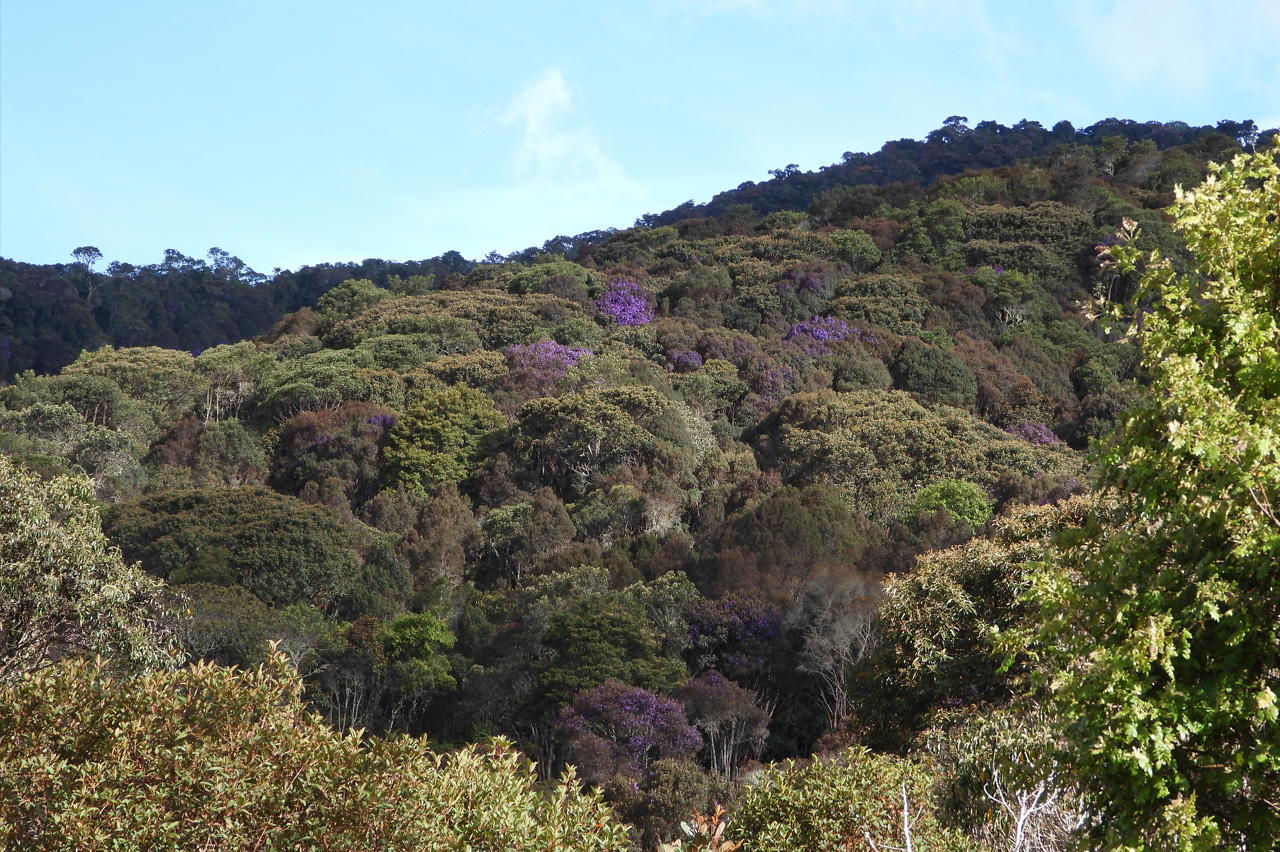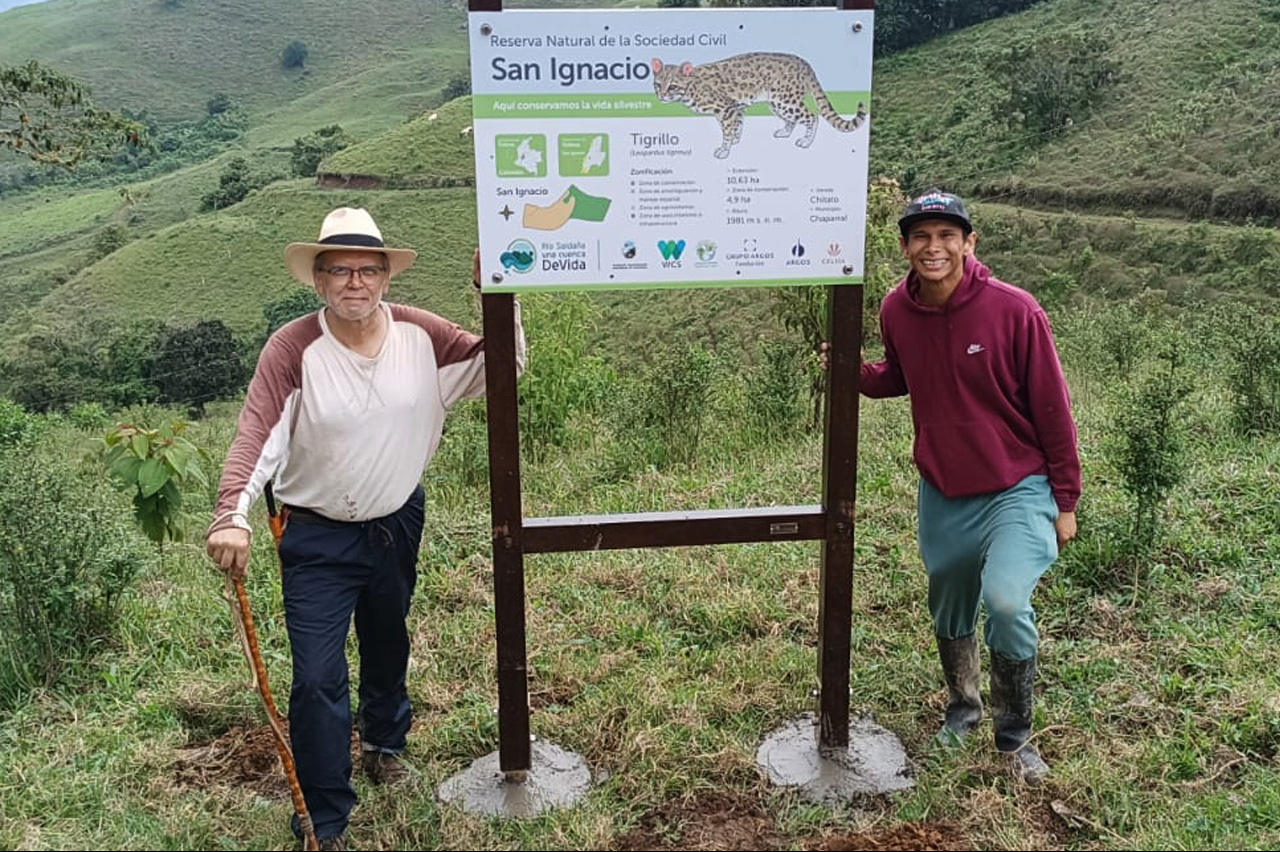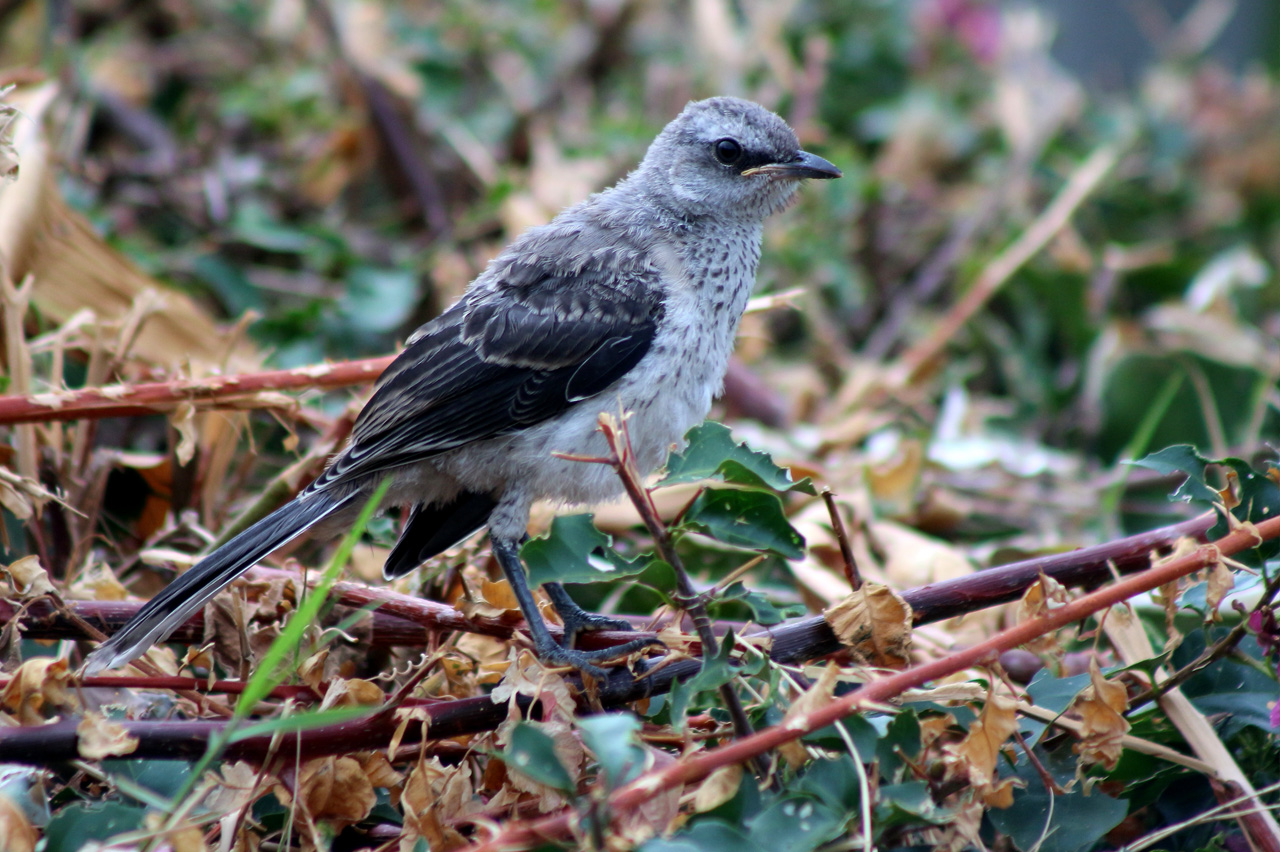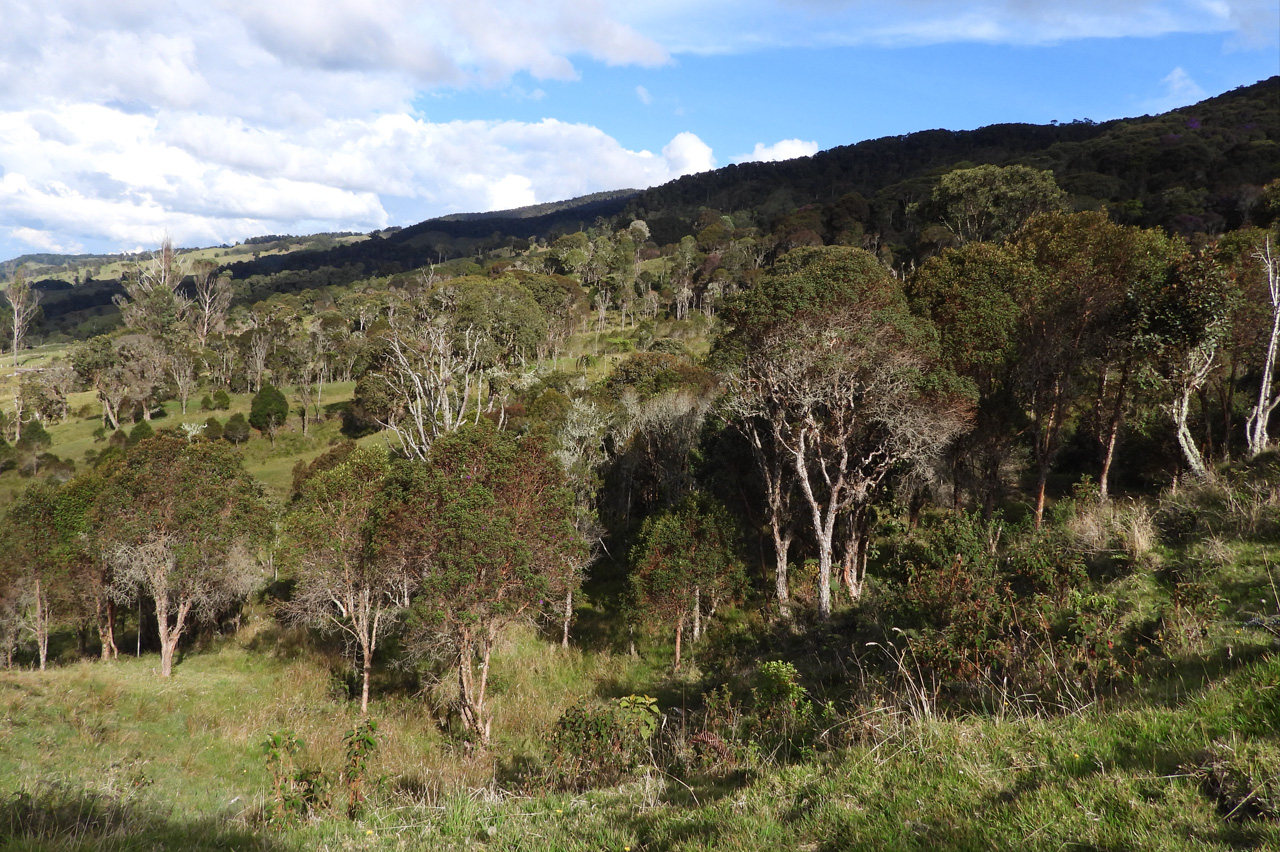A group of landowners in southern Tolima is showing that citizens, too, can be conservationists. By turning their properties into Civil Society Nature Reserves, they are committing to the protection of forests, rivers, and unique species, while also adopting practices that are more environmentally friendly. Discover their stories and how, from their own land, they are changing the future of Colombia’s biodiversity.
 Photo: Katherine Pérez / WCS Colombia
Photo: Katherine Pérez / WCS Colombia
By Jacobo Patiño Giraldo
Colombia is a country divided between private and public land. According to the Agustín Codazzi Geographic Institute, of the 114 million hectares that make up the national territory, 47% of rural land is distributed among more than 3.6 million private properties. At the same time, Colombia is one of the most biodiverse countries in the world—ranked first in bird, orchid, and butterfly species, and second in amphibians, reptiles, freshwater fish, palms, and plants overall.
To safeguard this natural treasure, Colombia established the National System of Protected Areas (SINAP), which includes National Natural Parks, as well as regional and local protected areas managed by departmental and municipal authorities. Altogether, nearly 500 public areas fall under SINAP. But what about the 47% of rural private land?
Since 1993, Colombia has recognized the Civil Society Nature Reserve (CSNR) designation. Through this mechanism, landowners can voluntarily dedicate part or all of their property to the conservation, restoration, or sustainable use of a natural ecosystem, while also proposing its inclusion in SINAP. This designation opens doors to a range of benefits, such as eligibility for national conservation programs and even tax exemptions. Today, there are more than 1,300 such reserves across the country.
According to Luis Javier Valbuena, monitoring specialist for the Saldaña River: A Basin of Life program, “By creating these conservation areas, we will ensure that biodiversity loss does not continue, that we preserve strategic sites, and that we prevent further fragmentation of habitats.”
Of the 15 families supported by the Saldaña River program in converting their farms into reserves, seven have already achieved the designation. Their efforts are helping safeguard biodiversity in the rivers and mountains that rise from southern Tolima, along the Central Andes. This article shares the stories of three landowners.
From Farm to Reserve
Buenos Aires is a small coffee farm near the municipality of Chaparral, Tolima. Covering 4.9 hectares and bordered by two streams, it is much more than just land to its owner, Luz Mila Sánchez. “This was the farm where I lived with my parents, Luis Carlos and Leonor. When my father passed away, I inherited the family home and this piece of land. That’s why it means so much to me,” she recalls.
That same love inspired Luz Mila to pursue conservation. “I’ve always liked having many trees around the house because I love nature and greenery. It all helps us conserve and produce more oxygen. I dream of seeing this land turned into a forest,” she adds.
Through a contact at Tolima’s Regional Autonomous Corporation (Cortolima), Luz Mila learned that she could apply for her farm to be declared a Civil Society Nature Reserve. That discovery marked the beginning of a process in which she also met Valbuena and the Saldaña River program. “When I applied, I started researching online: What is a reserve? What are the benefits? That helped me gain a lot of confidence, and now I feel proud to say that my land is a Civil Society Nature Reserve,” she explains.
 Photo: Luis Javier Valbuena / WCS Colombia
Photo: Luis Javier Valbuena / WCS Colombia
For Flor María Aguirre, owner of El Encanto, and for Fernando Gracia, owner of San Ignacio—both cattle farms in Roncesvalles and Chaparral—the path was similar. Driven by their desire to conserve, they too decided to turn their land into reserves. “Leaving the farm completely for the animals, like a national park, would be a dream for my children and me,” says Gracia.
Meanwhile, Aguirre and her family had already begun restoration efforts years earlier, so registering as a reserve was a logical next step. “About 25 years ago, through workshops and learning that conservation was necessary, we started planting trees through various projects,” she recalls.
However, in order to apply for CSNR status, landowners must identify what they are conserving. With the support of Saldaña River: A Basin of Life, they draft a technical document that serves, among other things, as an inventory of the species living there. “Most landowners don’t have the ability to produce this document themselves, so the program helps with the entire registration process,” Valbuena explains.
The next step is developing a management plan that lays out the actions required to ensure conservation or restoration of the ecosystem, depending on each farm’s goals. Some may lean toward ecotourism, while others aim to maintain agricultural or cattle production with biodiversity-friendly practices.
With the management plan in hand, property owners are ready to engage with public or private organizations that can help them achieve their goals. “They can approach the mayor’s office, the governor’s office, or the relevant authority in the region to seek support for their plan. For example, Saldaña River: A Basin of Life has restoration projects this year that include donating plants to reserves. We’re also implementing coexistence measures for species like pumas, bears, and eagles,” Valbuena adds.
Why conserve?
Our planet is facing an alarming biodiversity crisis. Wildlife populations have declined by an average of 69% over the last 50 years, and extinction rates are now 100 to 1,000 times higher than natural background levels. A major driver of this decline is habitat loss—the disappearance of the spaces and conditions needed by animals, plants, and other organisms to survive.
 Photo: Sebastián Giraldo / WCS Colombia
Photo: Sebastián Giraldo / WCS Colombia
Civil Society Nature Reserves directly address this challenge, functioning as biodiversity “islands” that keep ecosystems connected and allow wildlife to move freely. “By ensuring these conservation areas, we prevent further biodiversity loss. Protecting some strategic sites and restoring others will stop habitat fragmentation,” says Valbuena.
These reserves also safeguard another vital resource: water. “Registering a CSNR helps us protect freshwater ecosystems within these areas, which ensures both greater quantity and better quality of water,” he continues.
In the specific case of reserves in Chaparral and Roncesvalles, the areas are highly strategic because they host endemic species critical to their ecosystems. “We have five bird species found only here, including the Tolima Dove (Leptotila conoveri) and the Indigo-capped Hummingbird (Amazilia cyanifrons). The dove became the flagship species for my land,” Sánchez explains.
Beyond environmental benefits, CSNRs bring tangible opportunities for landowners. They gain easier access to conservation programs and, in some cases, to payments for ecosystem services. They may also receive property tax reductions and play a role in local land-use planning. “They have a voice and a vote in territorial planning processes, and must give prior consent for public investments that may affect them,” says Valbuena.
For these landowners, their reserves not only safeguard Tolima’s wildlife but also serve as models for their communities. “I’m convinced this is a contribution to the ecosystem. Even though there’s still much to do, we’re helping raise awareness in communities that this is possible,” Sánchez affirms.
The road ahead
Registering as a Civil Society Nature Reserve is only the beginning of a long-term conservation journey, and each of the three landowners has their own vision for the future.
 Photo: Katherine Pérez / WCS Colombia
Photo: Katherine Pérez / WCS Colombia
For Fernando Gracia, the dream is to dedicate his entire property to nature, moving away from cattle ranching altogether. “We want all 98 hectares of the farm to become a reserve. That would be ideal for the future of Chaparral, Tolima, and the planet.”
But that is not the only path. Agriculture and conservation need not be at odds, as demonstrated by the sustainable practices Luz Mila Sánchez is implementing. “We’re betting on a circular economy. I’ve been working with coffee cherries, which are a major pollutant of water sources. We’re making food products from this byproduct, such as cakes, cookies, and syrups. They sell really well because they’re innovative,” she says.
For her part, Flor María Aguirre is also adopting sustainable cattle ranching practices, such as rotating pastures, planting living fences, and reforesting grazing areas to maintain biodiversity.
Still, she hopes that conservation efforts will soon be recognized through payments for ecosystem services—financial incentives from the state or private entities that fund environmental stewardship projects. “That would be great, because it would motivate us even more to conserve. Neighbors would see that a reserve not only benefits the ecosystem but also provides income for the family that owns it,” she emphasizes.
In a country like Colombia, where biodiversity is priceless and private land covers more territory than public land, Civil Society Nature Reserves offer a powerful response to production models that continue to fragment ecosystems. Whether motivated by love of nature or a family legacy, people like Fernando, Luz Mila, and Flor demonstrate that conservation can come from anyone willing to transform Colombia’s countryside.
*Saldaña River: A Basin of Life is a public–private partnership between Colombia’s National Natural Parks, Cortolima, Fundación Grupo Argos, Concretos Argos, and WCS.